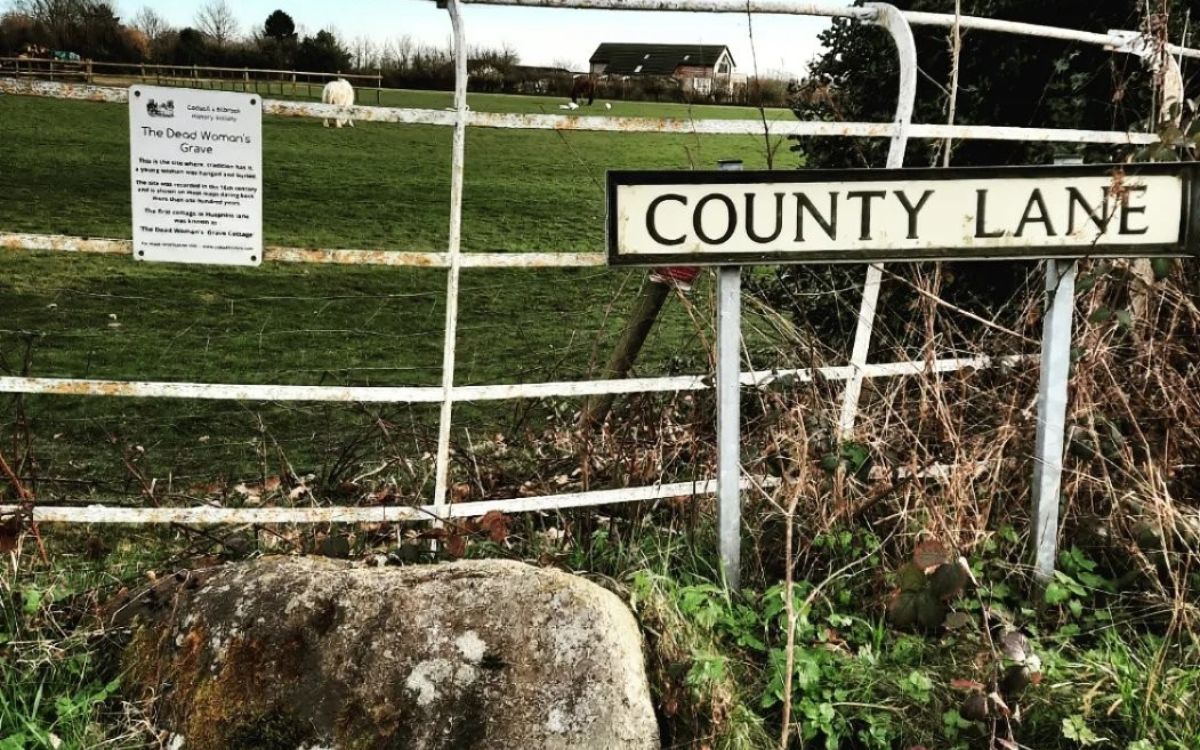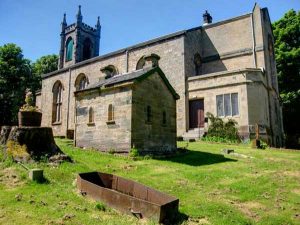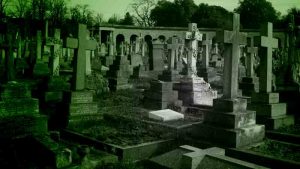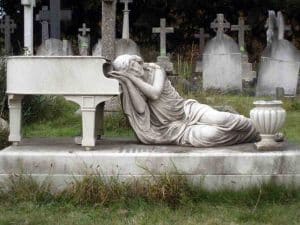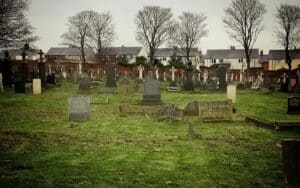The Outcast Dead of the Midlands, buried in unconsecrated ground or crossroads and haunted by superstitions and ghostly apparitions, continue to fascinate and intrigue, says guest writer LICHFIELD LORE
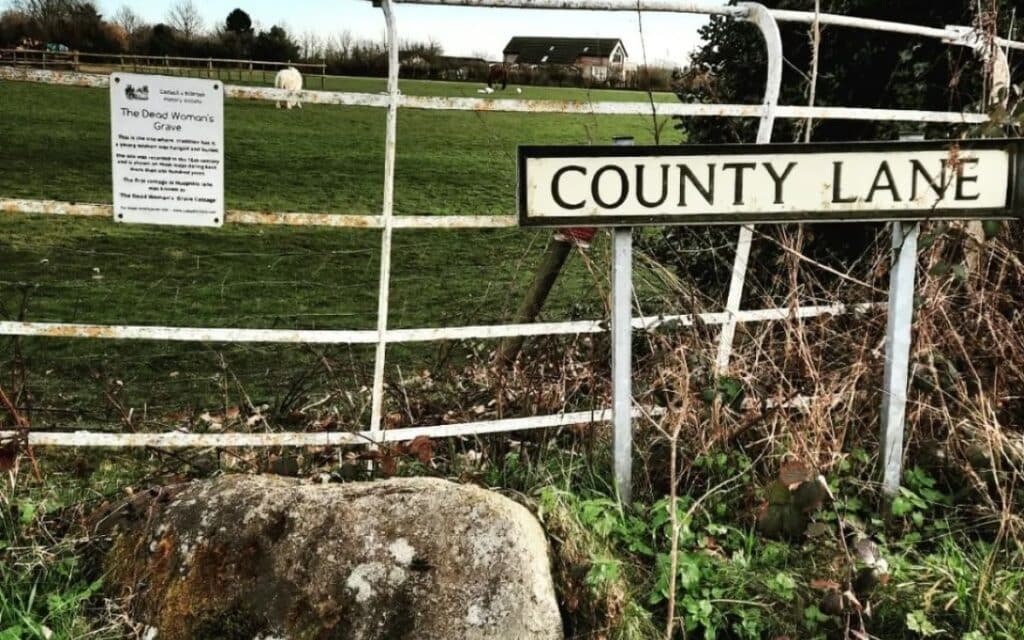
The dead surround us and somewhere between the burial mounds of pagan ancestors and those interred in consecrated ground, lie the bones of those in limbo. Their stories are scattered around the landscape, some remembered through place names or folklore, others long faded from map and memory.
The crossroads of the Midlands are the final resting places for many of these outcast dead. Here in my home city of Lichfield, 18th century poet Anna Seward, wrote a verse at a place known as Bessy Banks Grave in the north of the city where, ‘a love-desperate maid of vanish’d years’ was buried.
David Garrick also wrote of the spot, describing it as supposedly haunted though there is no trace now of the place where Garrick described seeing two sister trees forming an elegant arch over a stream. Ironically, the site of this unconsecrated burial now seems to lie beneath a Catholic church built in the 1970s.
Last resting places of the Outcast Dead
At Codsall Wood in South Staffordshire, the local history society have erected a plaque at ‘Dead Woman’s Grave’, explaining that the name was first recorded in the 16th century. In their version of the tragic events which transpired so many centuries ago, a young woman was hanged and buried here at the crossroads.
According to the West Midlands Ghost Club, a boulder is said to mark the exact site of the grave. When it was removed by the local council and thrown into a pit, locals protested concerned that this may have released the woman’s spirit and it was quickly retrieved and returned to its rightful spot, where it still sits today. However, as folklore suggests the Dead Woman’s ghost can be seen sat on it at Halloween, this remedial action may have been too late.
In nearby Brewood, a triangular piece of land at Four Lanes End was the site of another unorthodox burial, details of which have been lost. However, locally it was known as a place where ghosts were seen at midnight and the town’s more superstitious residents would walk past it backwards. At a Parish Council meeting in 1906, a resident suggested that to lay the spirits, a layer of stones should be added to the top of the grave but the parish clerk, channelling Richard Lovelace, suggested that ‘Stone walls do not a prison make nor iron bars a cage’.
Barbarically, a stake through the body often formed part of these profane burials. If its purpose was to prevent any unhappy spectres from rising from the grave, it appears to have been spectacularly unsuccessful in some cases.
At Geoffrey Woods Cross, a Godcake near Coventry now swallowed up by development, the grave of a young man was supposedly secured by a stake, yet there is a story of how some of the neighbourhood residents once saw a ghostly re-enactment of the burial, culminating in the phantom cart disappearing in flames as it pulled up at the crossroads.
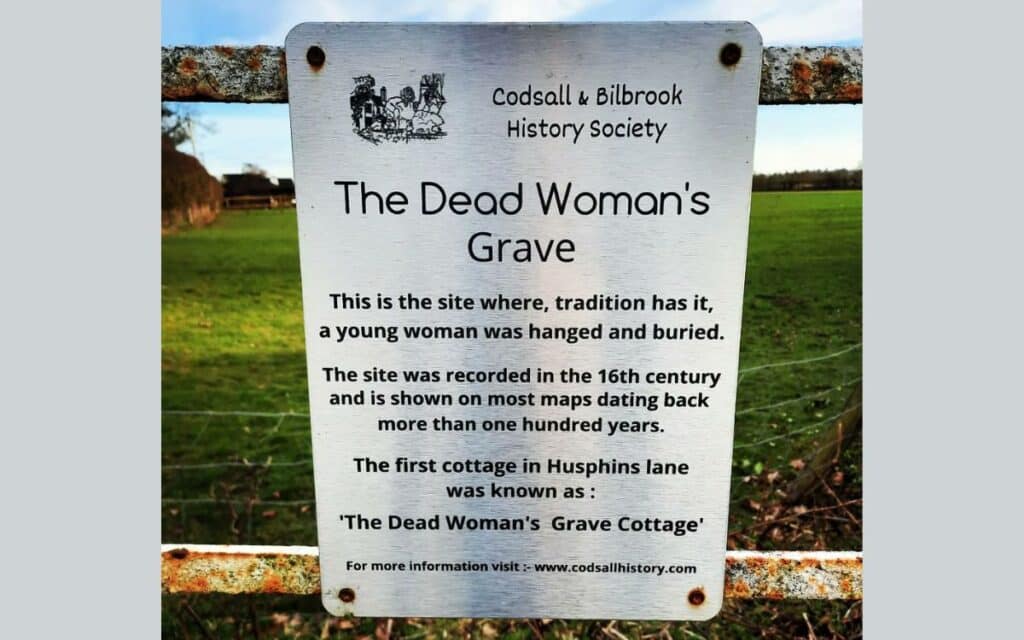
At Bates Bush in Worcestershire, the bush in question was a tree said to have grown when the stake took root. This place too was haunted, by an array of supernatural creatures including nymphs and hobgoblins, a headless man and ‘something like a black pig’, according to Jabez Allies’ Folklore of Worcestershire.
Amidst the stories woven by superstition over the years, tangible traces of these tragic events have been found. In 1868, workmen near Birmingham’s Jewellery Quarter came across an elm coffin containing the skeleton of a man and a length of wood, presumed to be the stake. At Bradmore, a village near Wolverhampton, workers digging a new water main at a spot known as Dead Lad’s Lane discovered the thigh bones of an adult male.
The practice of burial in the highway was officially laid to rest in June 1823 but 200 years later the scars in the landscape have yet to heal.
LICHFIELD LORE has been fascinated by folklore and spooky stories since she was a child and has been writing about the weird side of Staffordshire and the wider Midlands area for the past 10 years. Her ‘Little Book of Staffordshire’ was published in 2017 and she is currently working on a new collection of curiosities. In the meantime, you can find her blog at lichfieldlore.co.uk.
Have you burials at unconsecrated ground or crossroads in your area? Tell us about them in the comments section below!

